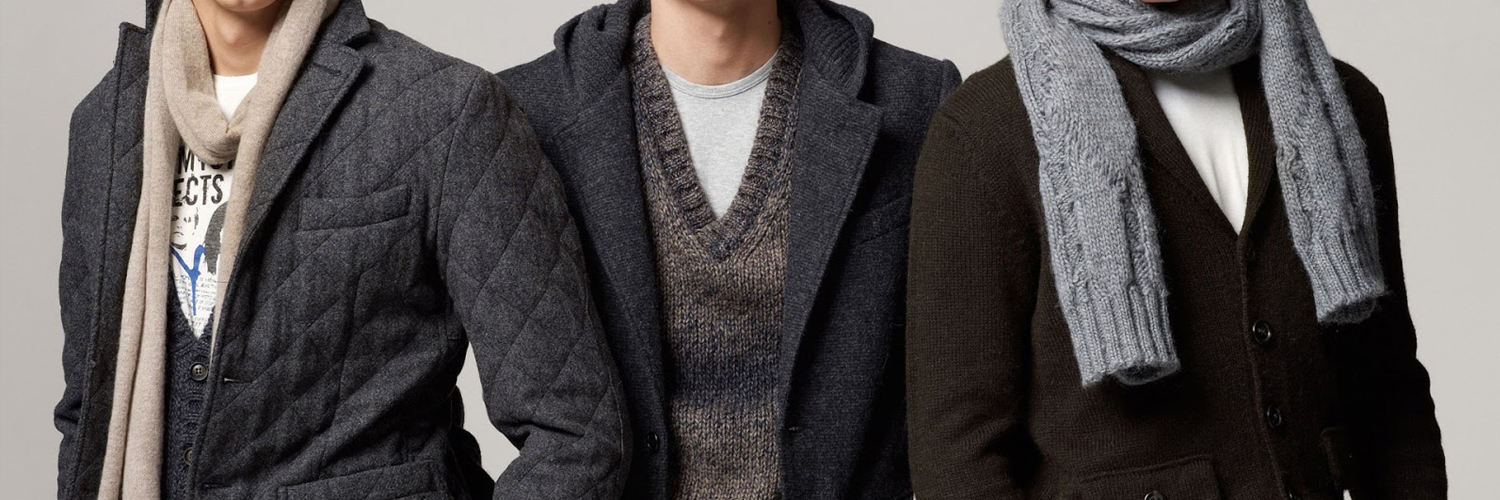Cracking the Distinction: Everything you need to know about the Difference Between Coat and Jacket
Where ever we go, T-shirts, trousers, and sweatshirts keep following us, but do you know what the new talk of the town is? It's the coats and jackets. The coats and jackets have made a perfect place in the wardrobe of people of all ages. Based on the research from the statistica, only the jackets and coats industry is generating a revenue of more than $6 billion globally, which isn't surprising because of consumer demand. Though many customers may mistake them as identical goods, these two garments actually differ significantly in several aspects.

Don't feel overwhelmed if you don't understand the differences between these two terms; no fashion police is waiting around! In fact, being both a jacket manufacturer and a formal coat manufacturer, we are here to crack the difference between both. We have been a helping guide for fashionistas, fashion agencies, and clothing brands as we work with tons of clothing brands and guide them with the right decisions. Likewise, this blog is for everyone who wants to know the difference between a coat and a jacket and which one to choose.
Coat vs jackets!
From look, style, features, and functionalities, both clothing pieces look different and serve different purposes. Moreover, the primary difference is about the fabric's use in manufacturing jackets and coats. Here is everything you need to know about coats, jackets, and the difference between coats and jackets.
What is Coat?

You might already know what coat it, but when we compare it with the jacket. The actual sense of coats changes. Over your T-shirt, sweatshirt, or hoodie, you wear this coat as a warm outer layer. Your body needs the coat's principal function to be protection from the cold. Unlike the typical coats worn with suits, which have a maximum length of the waist, these coats have a length that is at least as long as your hips.
Coming with full-length sleeves, the coats allow to have loose fit for the body to ensure the layering beneath the coat. Coats are popular because of their formal looks, like hooded coats. If we further dig deep, there are certain types of coats like trench coats, parkas, wrap coats, raincoats, and more..
Talking about the warming features of the coats as compared to the jackets, we can agree that coats are warmer than jackets as they are manufactured using a heavier fabric.
Advantages of coats
Here are some of the advantages you get with coats:
• Superior warmth
• Whether resistance
• Heavy fabric
• Longer lifespan
• Layering capability
• Best for formal clothing
• Variety of fabric material
• Best to style with
• Durable
• High breathability
Types of coats
Here are some of the common types of coats
• Overcoat
• Peacoat
• Trench coat
• Parka
• Duffel coat
• Puffer coat
• Raincoat
• Fur coat
• Down coat
• Car coat
• Wool coat
• Quilted coat
• Anorak
• Faux fur coat
• Topcoat
• Chesterfield coat
• Toggle coat
• Military coat
• Cape coat
• Wrap coat
What is a jacket?

Coming to the other side, jackets are also outerwear clothing worn over a T-shirt, shirt, or sweatshirt. What makes a jacket different from a coat is its length, which is less than the coat. The jackets come with a lower length that ends around the waist, and comparatively, the jackets offer a close-fitted structure to the body. Jackets have an opening from the front and bottom sides of the jacket.
The jackets are considered to be a part of informal clothing, and they are paired up with casual and party-type looks. Some common examples of warm jackets are varsity, leather, denim, sportswear, blazers, and more. Most of the jacket design comes with a casual look, such as men's & women's black jacket with hood, but a few jacket designs also pair up with formal clothing like suits and tuxedo jackets.
The jackets are manufactured using light fabric, making them less warm than coats. But still, there are certain kinds of thick fabric made explicitly for warming purposes and warm weather jackets, such as polyester and cashmere fabric.
Advantages of jackets
Here are some of the advantages you get with jackets:
• Easy mobility
• Flexible
• Comfortable
• Look good with casual clothing
• More number styling options
• Easy to use at all weather times
• Modern and trendy
• Versatile product
• Affordable
• Looks modern and fashionable
Types of jackets
Here are some of the common types of jackets
• Bomber jacket
• Leather jacket
• Denim jacket
• Blazer
• Parka jacket
• Windbreaker
• Puffer jacket
• Trench coat jacket
• Field jacket
• Moto jacket
• Track jacket
• Harrington jacket
• Rain jacket
• Quilted jacket
• Pea coat jacket
• Military jacket
• Fleece jacket
• Ski jacket
• Softshell jacket
• Down jacket
Difference Between Jackets & Coats

Differences Based on Materials
The primary difference between the jackets and coats is that coats are made of heavier and thick fabric, while the jackets are manufactured using lightweight fabric. Since the coats are manufactured using more serious material, it provides warmer in cold temperatures. Both are equally common between men and women.
Difference Based on Length
Moreover, the difference in lengths is one of the critical factors to note. The coats are lengthier, as comes to hip-length. Also, it can exceed till knees. At the same time, the jackets come with a fixed length around the waist unless it's an oversized hoodie. One common thing in both attire products is that they both come with longer sleeves.
Differences Based on Clothing Purpose
The jackets are more usual to consider for casual clothing, and if you are a formal brand, then long coats, trench coats, and wrap coats might be a better option for your brand.
What is The Common Fabric Type Used for Manufacturing Jackets or Coats?

-
For jackets, commonly used fabric for manufacturing includes cotton, leather, polyester, denim, and more. However, a thick material is employed to create the skin instead of the same type of cloth that is used to create coats. The coat's clothing line is expanded with several layers of thick fabric to ensure insulation.
-
Moreover, if you want a jacket with thick materials for colder seasons, then fleece, wool, sheepskin, or shearling fabric is the right kind for such jackets. The multiple layers of the coats include the shell layer, outer layer, filling, the lining inside the coat and some additional layers for the pockets.
-
On the other side, the jackets include fewer layers. Instead of layers, the jackets have a hood or styled collar for the jacket. Comparatively, the jackets are more flexible as they are made of a blend of polyester fabric.
-
You also need to take care of the fastening when choosing between jackets and coats. For those who don't know, the fasteners mean zippers. Both of the products share the same kind of fasteners. In coats, zippers are not much common, and it uses buttons instead. The jackets use zippers, and it's essential to consider their material. Certain styles use the zipper style structure, for example, down-filled coats and parkas.
-
Also, you need to consider the kind of fit you are looking for. If you prefer something skin-tight, coats are excellent choices, while hoodies, jackets or varsity jackets offer flexible yet warm fabrics and can pair easily with casual clothing.
-
Suppose you are attending any formal event and wish to add an outer layer to the jacket, then wear a coat made up of satin or silk fabric. Moreover, with formal clothing, you must ensure that the jacket is the right size and shouldn't be too fit or loose.
-
Usually, the jackets suit more with casual clothing, but make sure to use the right color combination with the casual dress. The standard type of casual jacket includes denim, leather, hoodies, fleece, and wool jackets.
-
For colder weather jackets, the manufacturer of wool or fleece is recommended.
-
Colder season
-
Casual clothing
-
Rainy weather
-
Party wear
-
Air-conditioned environment
-
For colder weather jackets, the manufacturer of wool or fleece is recommended.
-
Extremely cold weather
-
Business meetings
-
Formal attire
-
Long-duration outdoor activities
-
Coats and jackets both serve as outer clothing for both men and women.
-
Both possess long sleeves and a front opening.
-
They offer protection from chilly weather.
-
Their primary function is to cover the upper body of the person wearing them.
-
A diverse range of coats and jackets with various types and styles exist.
-
Both garment covers are crafted using multiple fabrics like wool or cotton, ensuring warmth for the weather.
-
Coats and jackets come equipped with closure-like buttons or zippers, serving the purpose of blocking wind.
-
Both are intended to be worn on top of other clothing.
-
They are designed for use in cold weather conditions.
When to wear jackets?

The jacket is an informal item of clothing that pairs well with casual attire; however, there are specific designs of jackets which also go well with formal attire. It is advised to pair a jacket with a straightforward outfit. You can use the following use cases as examples:
The common occasions where you can opt to wear jackets include:
When to wear coats?

Like certain kinds of jackets go on with formal clothing, and certain coats look good with casual dresses. For example, skin looks good with a shirt and jeans. Coats are manufactured using a heavier fabric, so they are well fit for cold weather.
Here are some of the common occasions when you can wear a coat:
Snowy season
Differences based on a sports coat and dinner jacket:

The significant difference between sports coats and diner jackets is that 1sports coats are more casual and more versatile, as they come with patch pockets. This loose fit makes them easy to wear. They have more patterns, such as plaids or checks, and are made of a thicker and heavier fabric than dinner jackets.
On the other side, dinner jackets are more formal and have jetted pockets. They are usually worn with a bow tie and are typically worn for formal events.
Similarities between coat and jacket:

Conclusion
A coat is typically an over-sized, long article of outerwear designed for colder climates, while jackets tend to be lighter, shorter garments that can accommodate multiple climate conditions. Coats typically reach knee or thigh level while casual jackets may reach beyond. One fundamental distinction between coats and jackets lies in length - jackets usually end at waist level while coats extend further beyond it. Moreover, coats are equipped with warmer fabric, ensuring superior insulation compared to most jackets. Coats are preferred for outdoor activities, while jackets offer a comfortable option for indoor wear.
